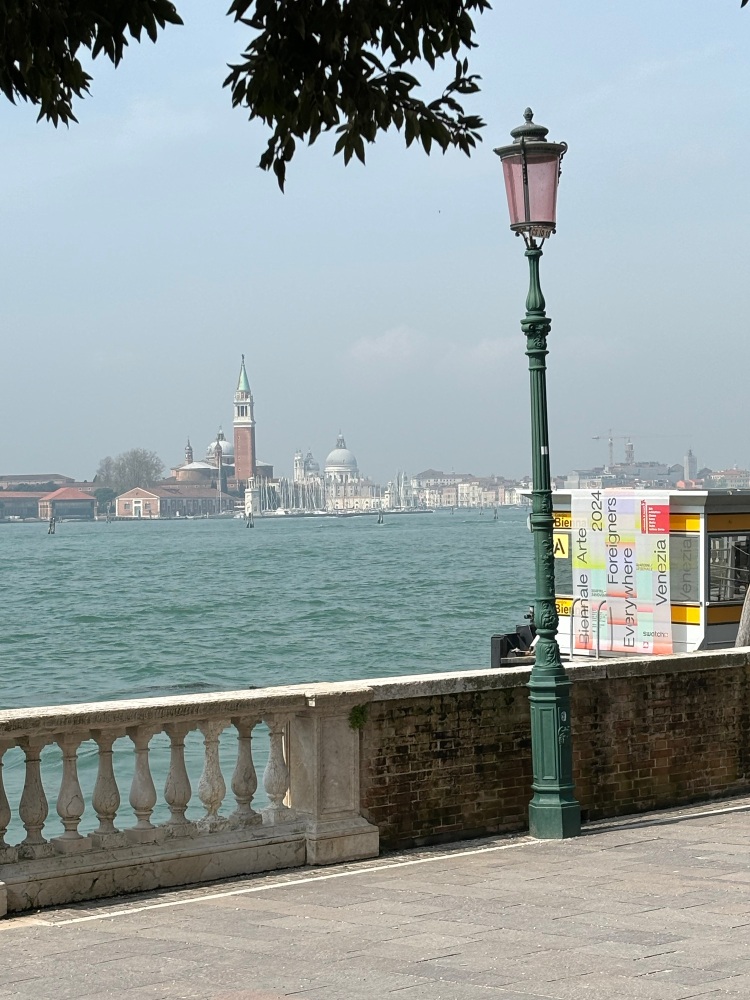This year’s Biennale in Venice is entitled ‘Stranieri Ovunque’ meaning Strangers or Foreigners everywhere’. The curator Adrian Pedrosa has chosen to focus on marginalised artists, especially those from the Southern Hemisphere and from minority communities. A perfect example of Pedrosa’s philosophy is the inclusion of Guatemalan artist Paula Nicho in this year’s event. Guatemala is a small country sandwiched between Mexico, to the north and Honduras to the south. It is famed for weaving, textiles and brightly coloured clothing.
Paula Nicho comes from the small town of San Juan Comalapa located in the highlands of Guatemala. She paints in the tradition of Guatemalan Folk Art created by Andres Curruchich in the 1920s. Her home town of just about 32,000 people is a true artists community. The painting tradition started here when Andres Curruchich began to record the daily life of local people in his small and detailed canvases. He created a unique and naive style now known as Guatemalan Folk Art. Today there are some 500 painters in San Juan Comalapa, and the majority of them still use the techniques of Curruchich. These painters are dedicated to recording and portraying the costumes, life experiences and traditions of the small towns of the Guatemalan highlands. Curruchich also trained his granddaughters, María Elena Curruchich and Rosa Elena, as well as Paula Nicho. The Curruchich family and Nicho are both part of the indigenous Mayan group of people known as the Kaqchikel.
Guatemala and much of Southern Mexico was part of the Mayan Civilisation. The Mayan Civilisation was a sophisticated and technically advanced society that lasted from around 200 BCE to about 1000 AD. So in European terms the Maya were originally contemporary with the Romans in the Italian peninsula. The Maya survived until a few centuries before the arrival of Columbus. The Mayans left behind numerous temples, ball courts, public buildings and curious observatories (see map below). To this day Southern Mexico and Guatemala are popular destinations for archaeologists, the temple remains are spectacular. When the Spanish arrived in the 15th and 16th centuries the indigenous tribal groups were forced to adopt Christianity and to cooperate with their new rulers. Somehow the traditions of the Kaqchikel survived, especially weaving, colorful dying of material, traditional costumes and ways of dressing.
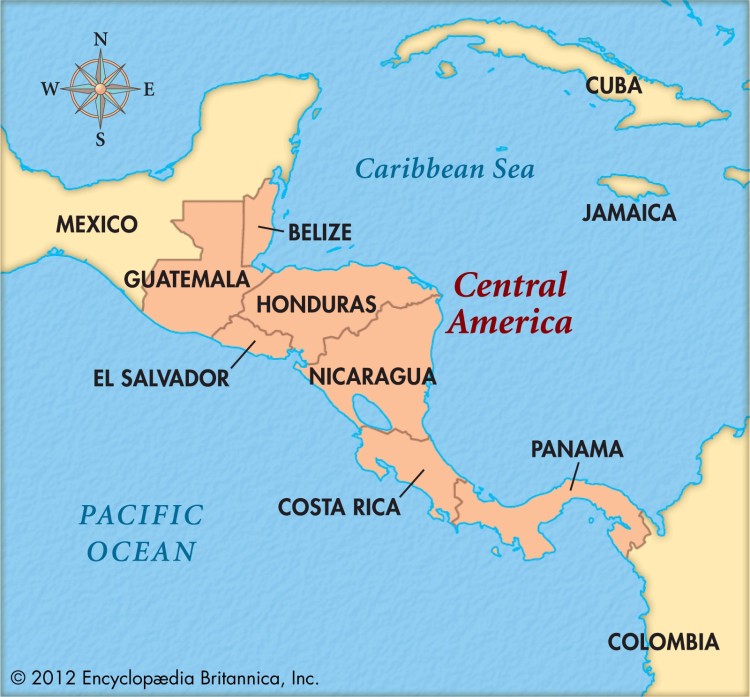

Central America – showing Guatemala, just south of Mexico (left). Mayan territory and key archaeological sites (right)
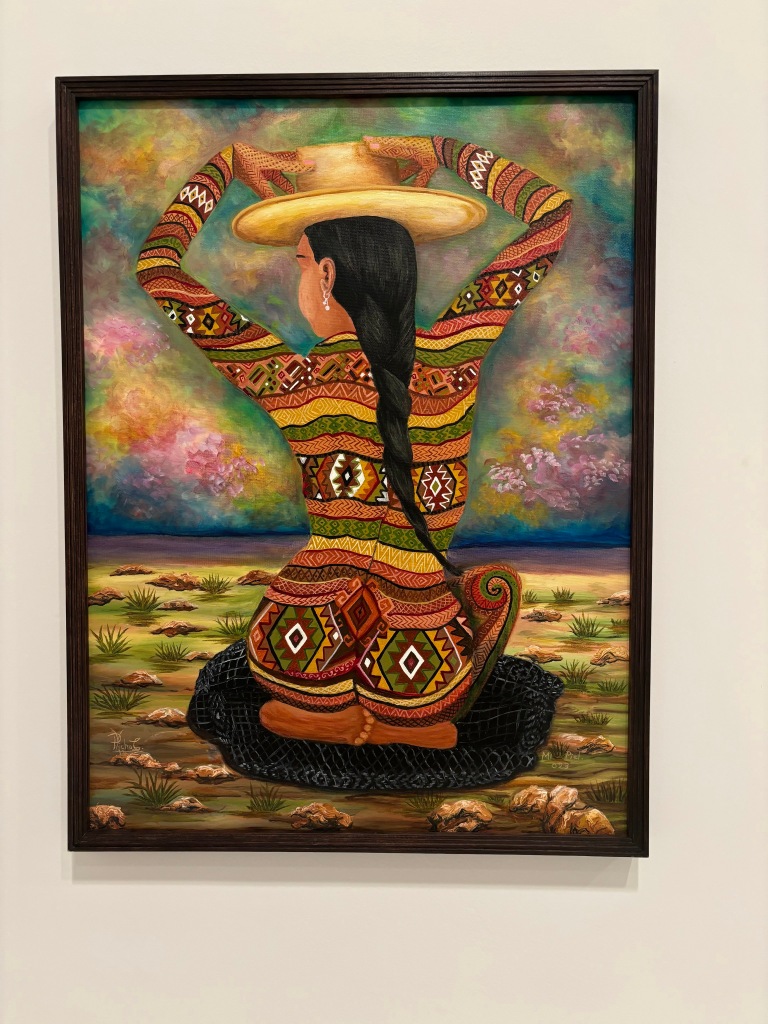
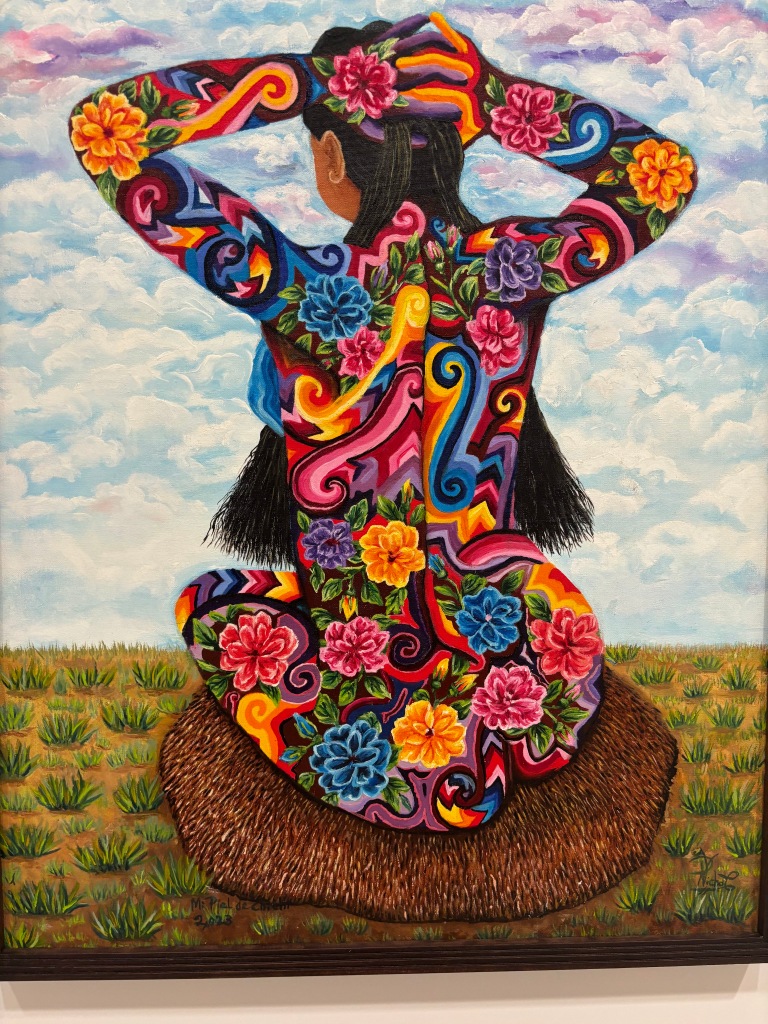
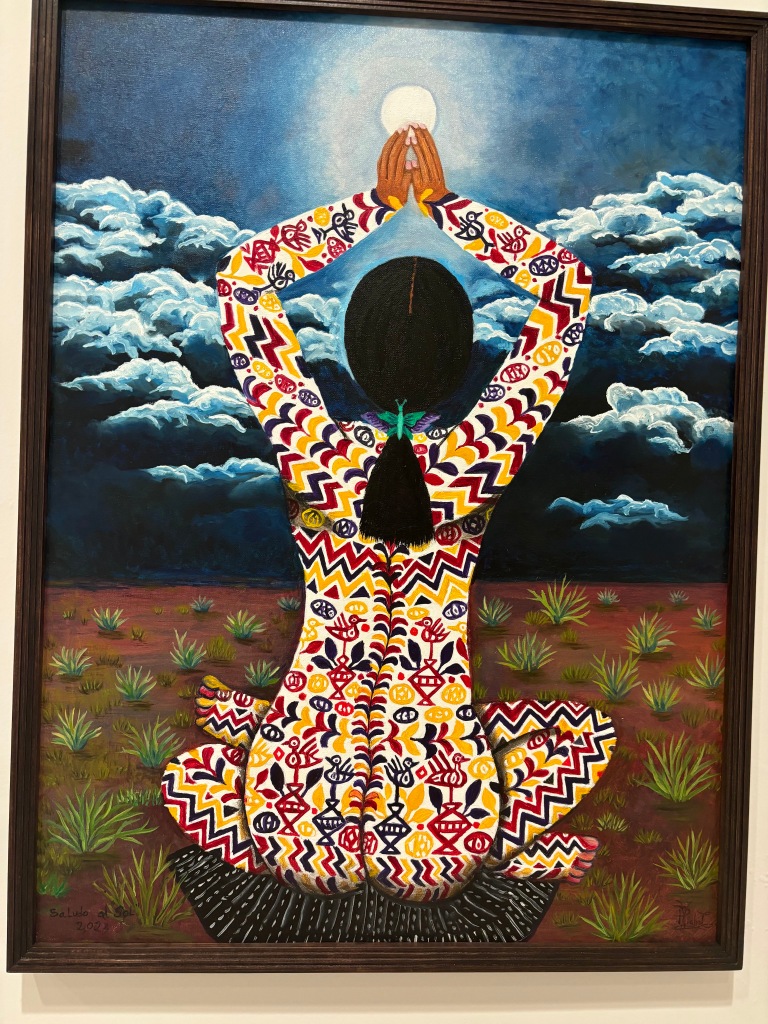
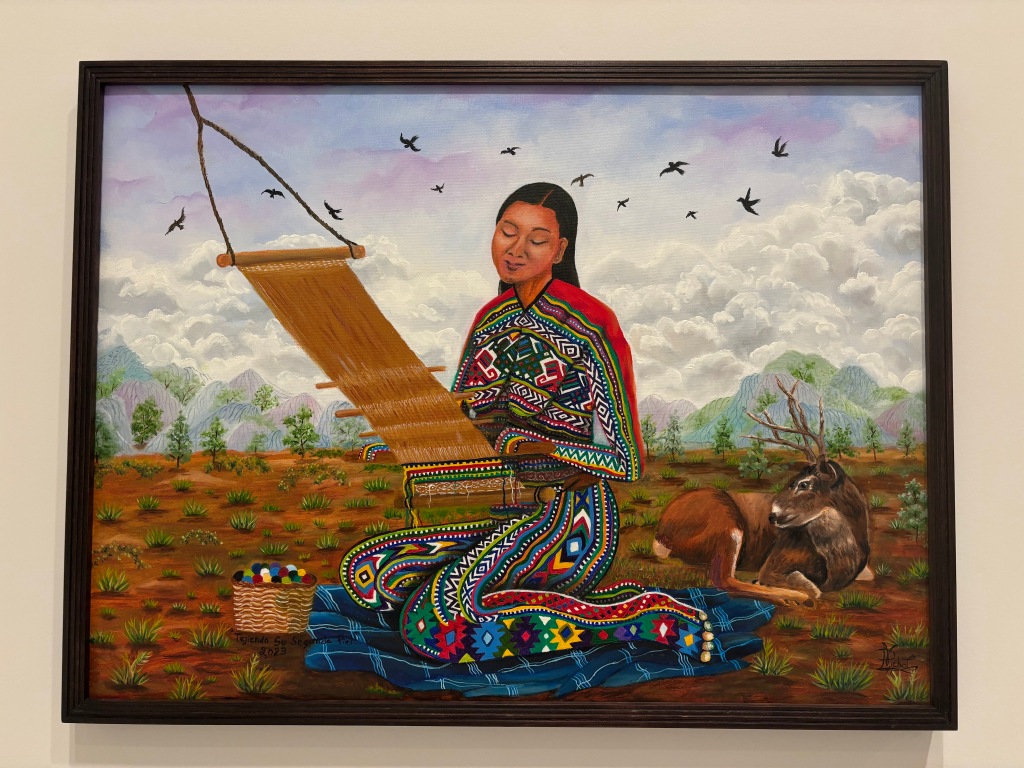
All paintings by Paula Nicho – honouring the colours and patterns of the Maya.
PAULA NICHO – Paula Nicho started her artistic life as a weaver, and then encouraged by her father and then her husband, she made the shift into painting. Paula Nicho’s work is a homage to the Mayan patterns, colours and weaving techniques that she saw as a child. In fact Paula Nicho was particularly influenced by the huipil – a traditional, hand-woven garment whose patterns reflect the memories, traditions and histories of the Kaqchikel people. Nicho’s paintings acknowledge the balance and dynamism of both the natural and spiritual worlds. Dream symbolism plays a central role in her creations. The paintings on show in Venice depict women keenly aware of their own power, resembling ancient Maya goddesses of healing, fertility and weaving. The women appear naked, covered with vibrant, colourful, geometrical shapes and motifs. The paintings combine folklore and the traditions of the Mayan peoples with the magical realism of Central America. The painting below shows men and women going about their daily lives; carrying water, transporting crops by donkey to the market. They are watched over by colourful, crazy hot air balloons introducing a comical and fairytale-like dimension to the canvas.
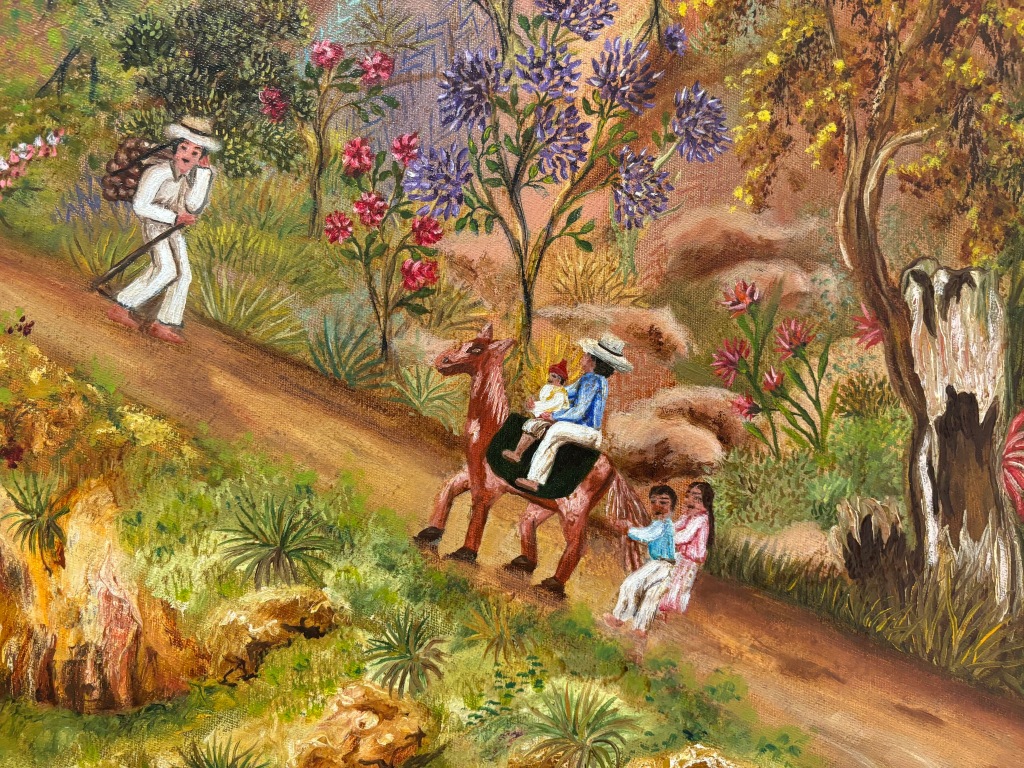

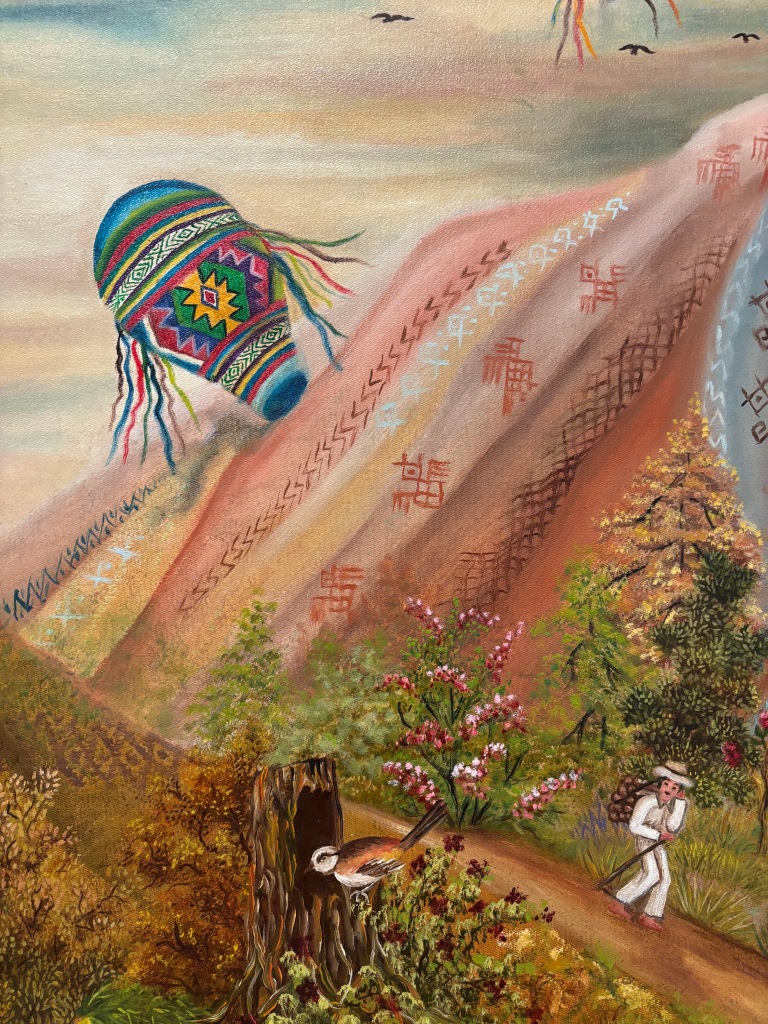
Paula Nicho – detail from Mayan scene – on show at Venezia Biennale until 24th Nov, 2024
Paula Nicho brings centuries of Mayan culture into the present day, with bright colours, intricate designs and a simplicity, a joy even, in the most mundane of daily tasks. For me the discovery of her paintings at this year’s Biennale was a breath of fresh air. A feast for the eyes of colour, symbolism and peace. I was instantly transported back to Tulum, Chichen Itza and Palenque (all Mayan sites) that I visited in the 1980s. On a more serious note the painters of San Juan Comalapa have kept the heritage and traditions of the Mayan people alive through the darkest days of Guatemala’s Civil War (1980s and 1990s). For this they deserve our support and our most profound respect.
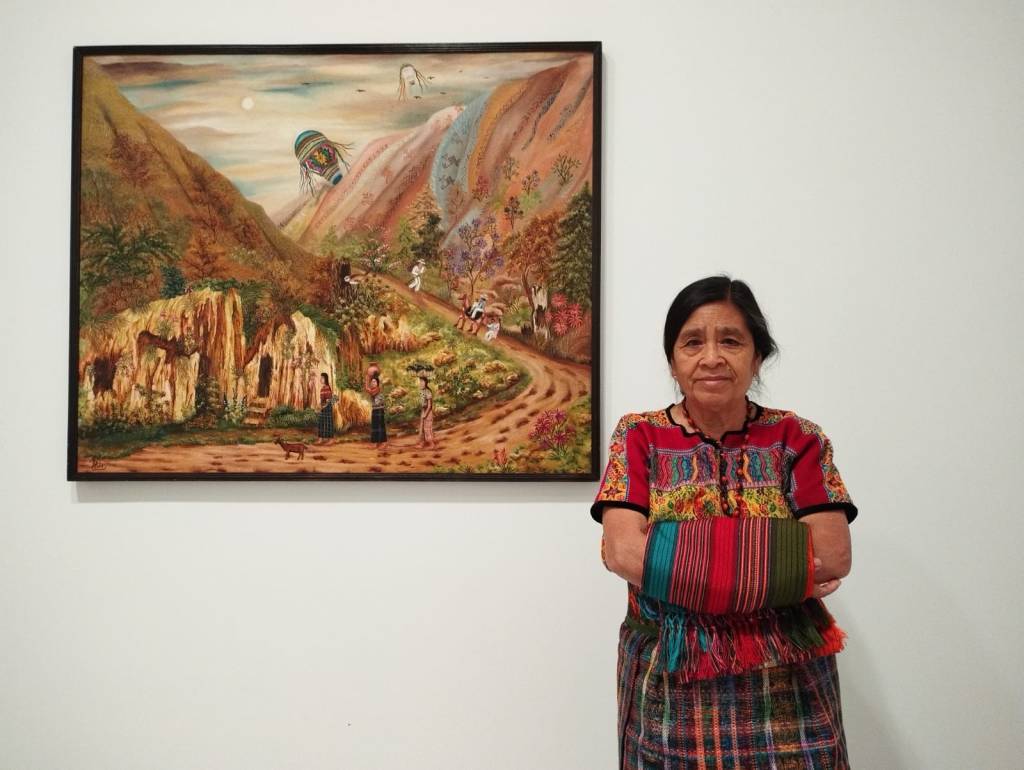
Paula Nicho in Venice – April, 2024 – photo: Uriela Cumez Nicho
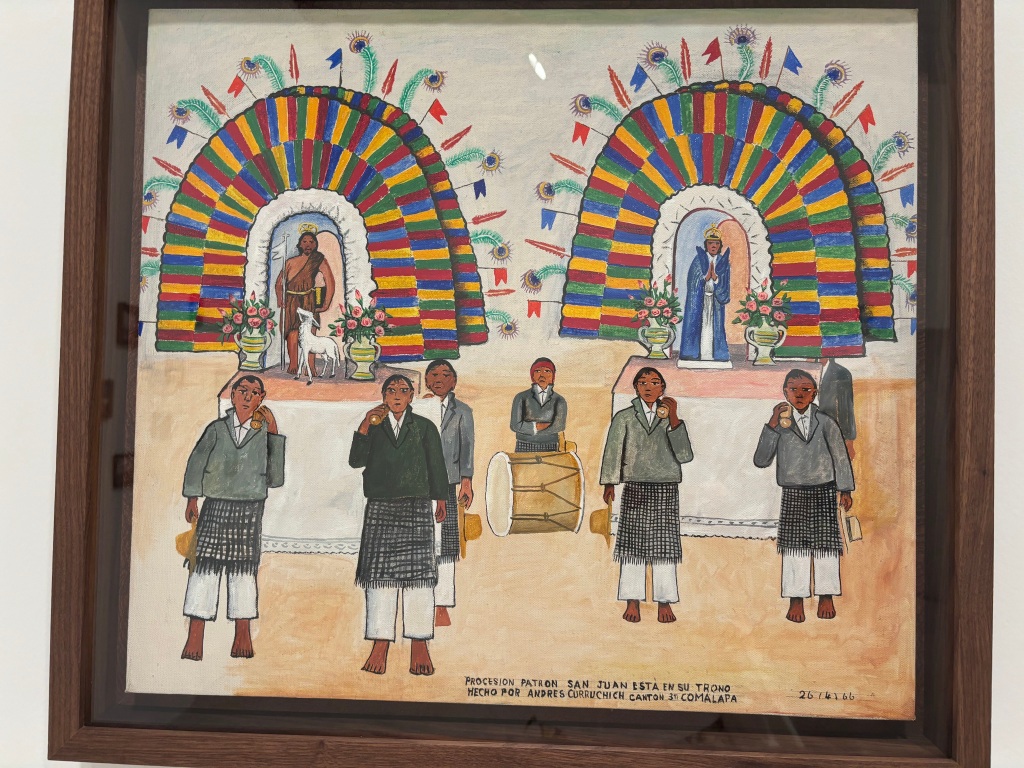
Andres Curruchich – San Juan en su trono, 1966 – on show at Biennale Venezia 2024 (right) until 24th Nov, 2024
A gallery of Nicho’s work at this year’s Biennale:


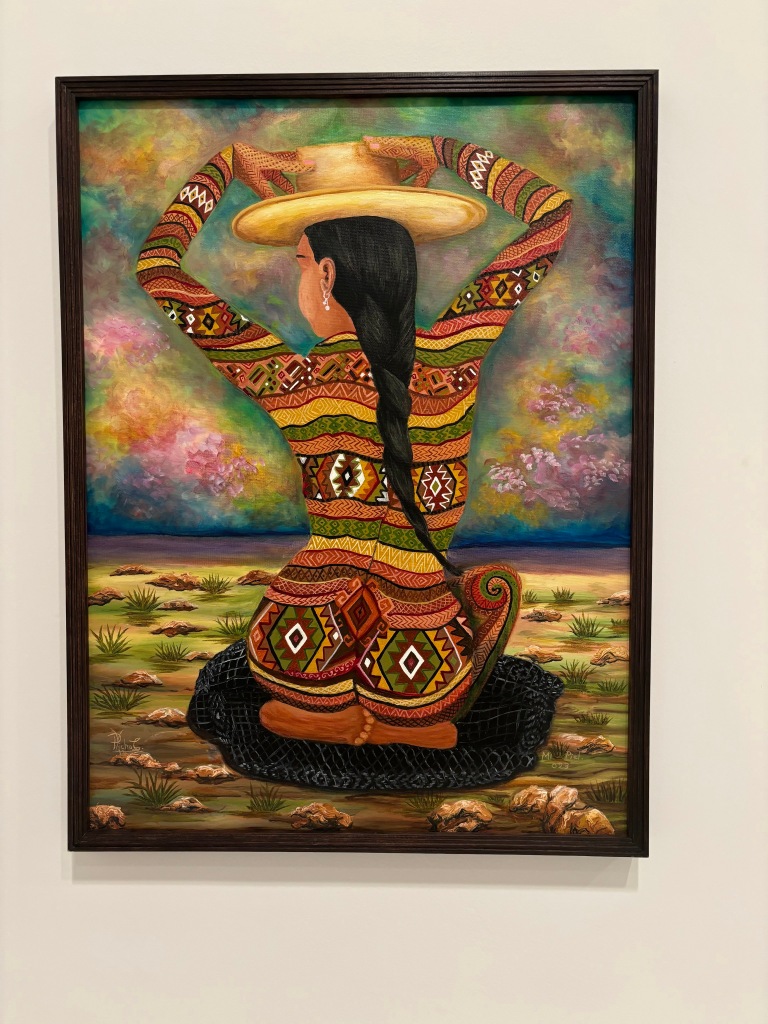


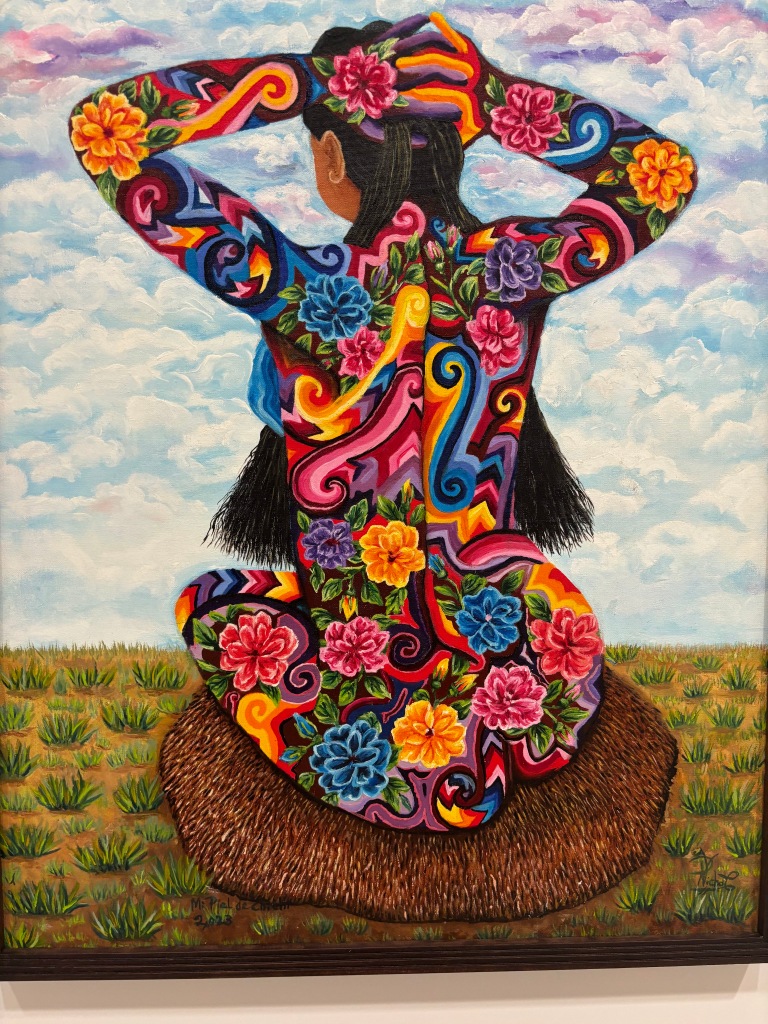




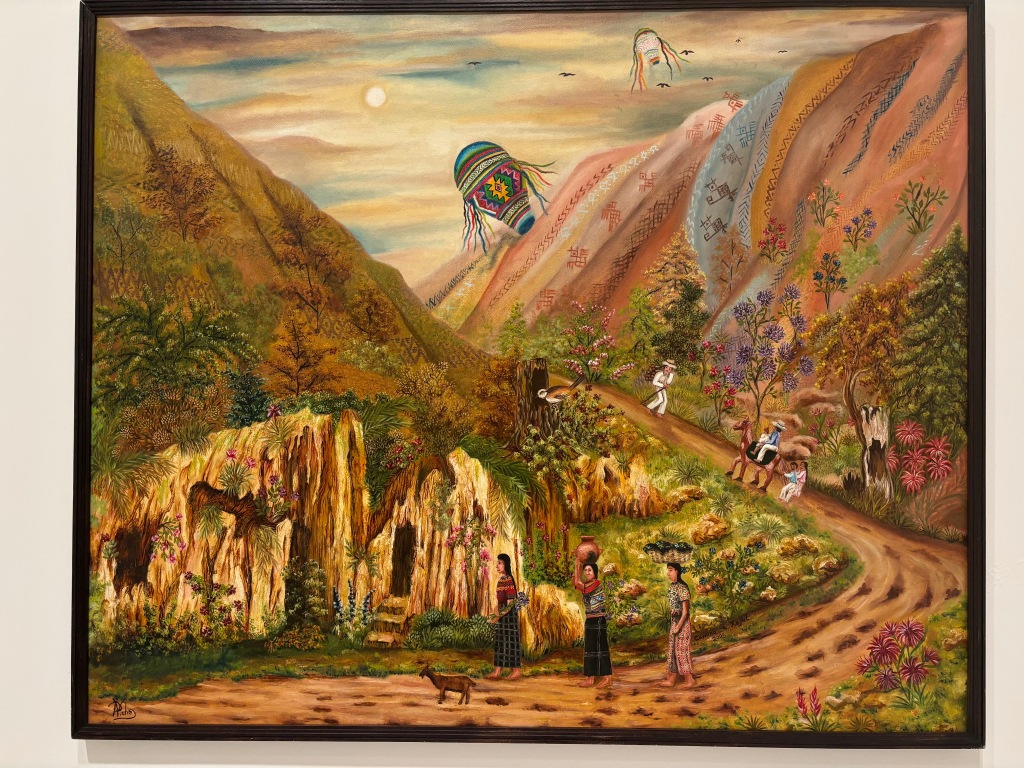
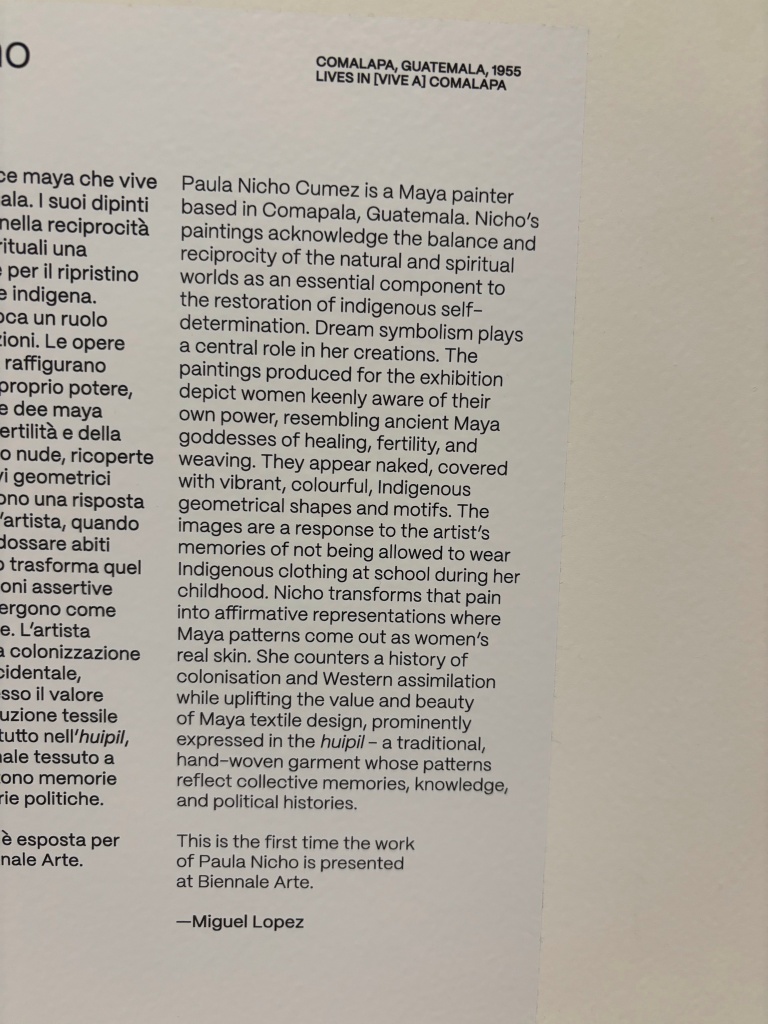
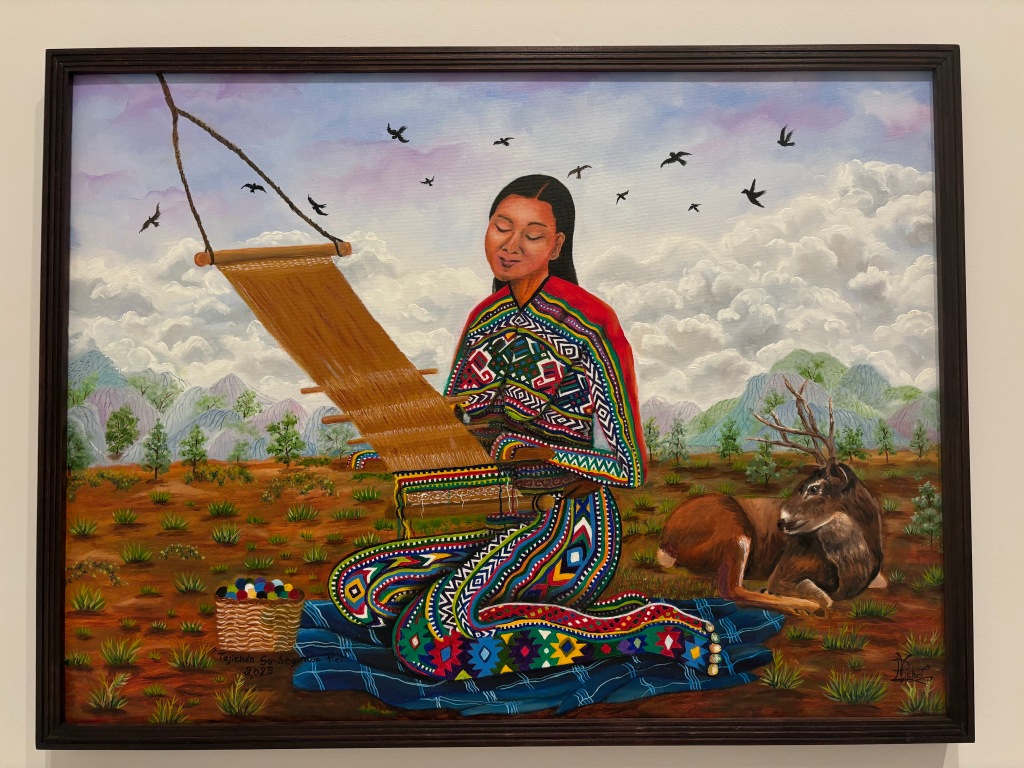

Notes:
- A most interesting article about Paula Nicho exhibiting in Venice – written by her daughter. The author is Uriela Cumez Nicho. Festivales Solidarios Medium / Paula Nicho Cúmez – pintora Maya-Kaqchikel at Venice’s Biennale
- Guatemalan painter Andrés Curruchich (1891–1969) started painting in the 1920s. He is widely regarded as the father of Guatemalan folk art. He was born in San Juan Comalapa on January 19, 1891. Andrés Curruchich is considered the first and most important of the naïve painters of San Juan Comalapa. In the 1930s and 1940s he exhibited his work at various shows and events in Guatemala. He even showed work in the USA. He taught his granddaughters and many others (iuncluding Paula Nicho) his techniques and how to paint in oil.
- Today the little town of San Juan Comalapa has a community of 500 artists (in a town of 32,000 people). It is sometimes called ‘The Florence of America’ a charming accolade.
- A couple of paintings by Rosa Elena Curruchich (died. 2005) – on show at The Biennale
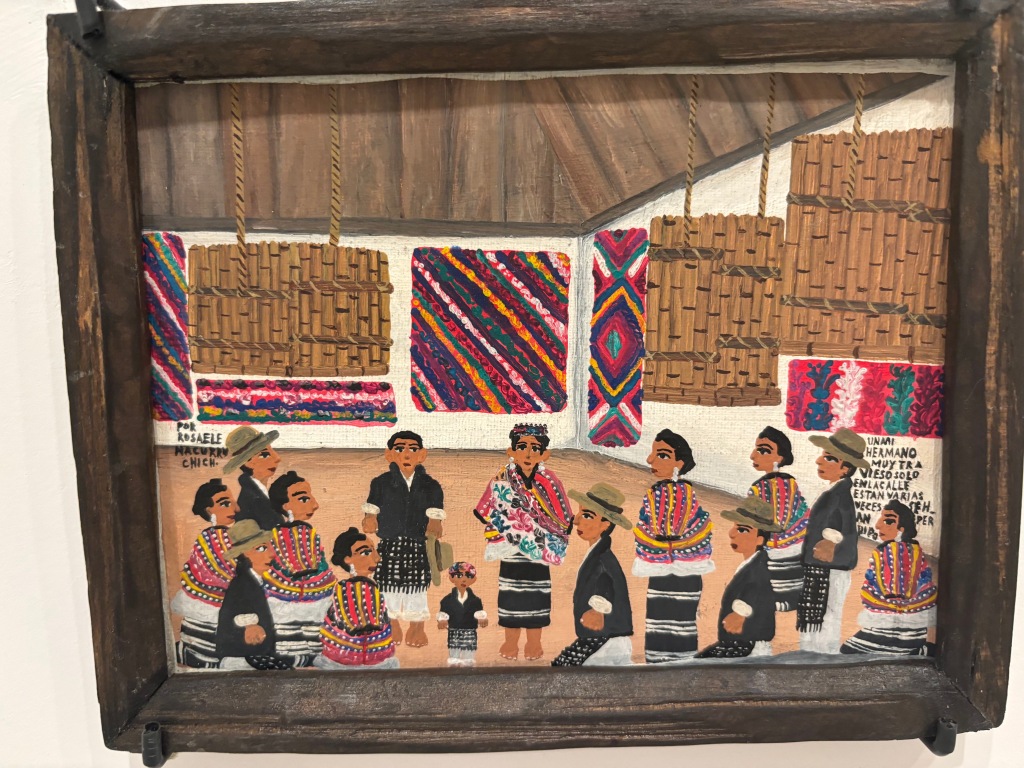
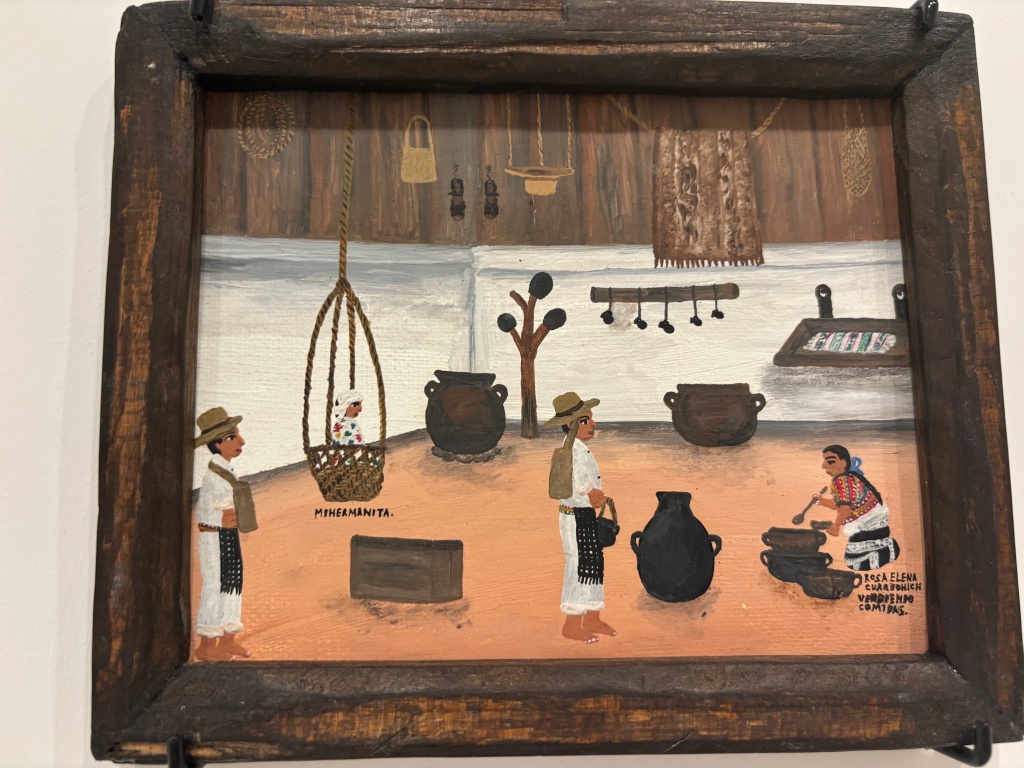
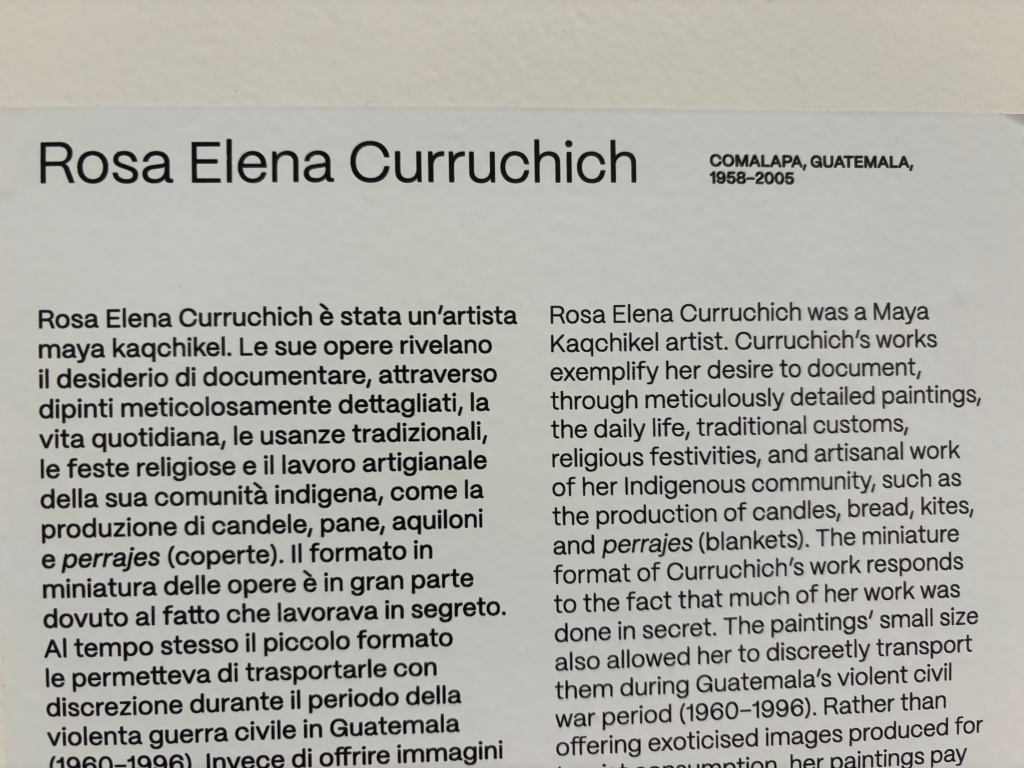
- Why not join me for a very special Venice visit in October, 2024 – when we will explore the Biennale and discover the artisans, art and craftsmanship of Venice today. Details below:
- Venice in October-November, 2024
A NOTE ON THE AUTHOR – Janet Simmonds (nee Panagakis) is a British-born tour guide, writer and travel company owner. Born in Liverpool with a slightly Greek grand-father and a very Greek great grand-father she has a special affinity with the history, culture and art of the Mediterranean, especially Italy and Greece. She studied Geography and Art History at the Universities of Oxford and Manchester, Janet has spent most of her adult life running specialist travel companies and travelling extensively. Several times a year she leads small groups to different parts of Europe. Most recently to Venice, Naples, Trieste, Basilicata and Athens.
- She writes about her travels on her blog: www.greyhoundtrainers.com
- Janet is also the owner of specialist travel company Grand Tourist which offers unique, tailor-made travel for individuals, couples and small groups.
- The web site is www.grand-tourist.com
August 2024
Photo by Janet Simmonds aka www.greyhoundtrainers.com

